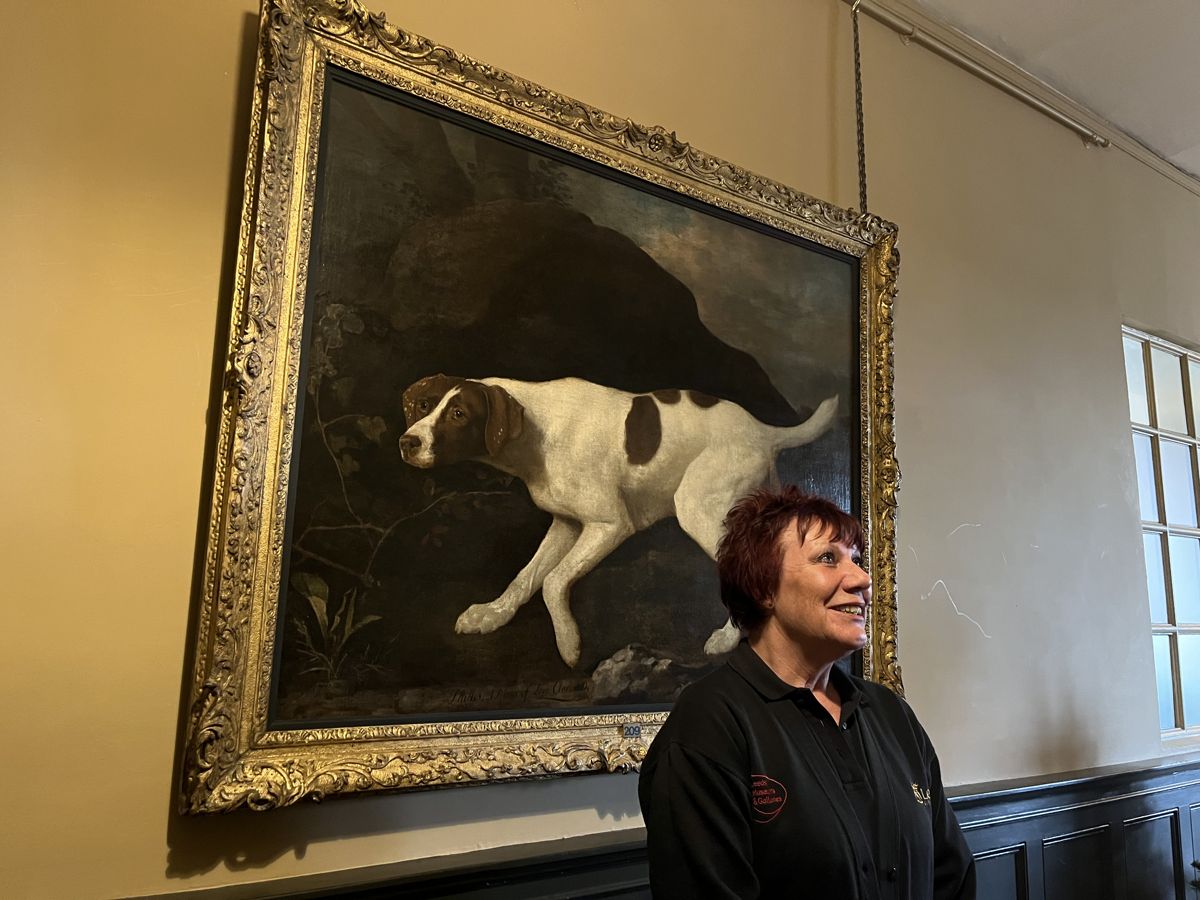The return of Phillis’s stunning oil painting to Temple Newsam, painted by George Stubbs in 1772, marks a vibrant celebration of Leeds’ cultural heritage, showcasing the bond between aristocrats and their cherished pets. Now displayed in the Domestic Corridor, this beloved English pointer symbolizes the estate’s rich history, joining over 300 fine art pieces that captivate visitors and honor the legacy of both the dog and her owner, Lord Clermont.
What is the significance of Phillis’s oil painting returning to Temple Newsam?
The return of Phillis’s portrait to Temple Newsam is significant because it celebrates Leeds’ cultural heritage. Painted by George Stubbs in 1772, this portrayal of the English pointer named Phillis symbolizes the estate’s rich history and art collection. It now adds to over 300 fine art pieces on display, reflecting the bond between the animal and the aristocracy of the time.
Temple Newsam House: An Abode of Art and Heritage
Temple Newsam House stands as a significant cultural landmark, rich with history and art. The estate, nestled in the heart of Leeds, has embraced the winter season by welcoming back a treasured piece to its impressive art collection. After years away, a striking oil painting of an English pointer named Phillis has returned home. Painted by the eminent George Stubbs in 1772, it captures the essence of a breed held in high esteem by the nobility of the era.
The portrait’s subject, Phillis, was not just any pet; she was a beloved member of an aristocratic family. This fact is underscored by her portrayal in a classic hunting pose, indicative of her value as a sporting animal and a companion. The dog’s legacy continues, as visitors can now view her likeness in the Domestic Corridor of the house upon entrance, surrounded by over 300 fine art pieces and family portraits that adorn the walls of this grand estate.
The Legacy of an Artist and His Subject
George Stubbs, renowned for his unparalleled knowledge of animal anatomy, was the foremost English sporting artist of his time. His portrayal of Phillis reflects the deep understanding and appreciation of the breed’s characteristics. Maya Harrison, principal keeper at Temple Newsam, remarks on the significance of Phillis’s return, “Phillis has always been much loved here at Temple Newsam and it’s great to have her back on display for visitors while we’re getting the house ready for winter.” The personalized name given to Phillis was an indication of her special place in her owner’s heart, as it was uncommon during that era to bestow human names on pets unless they were particularly cherished. This level of affection, coupled with the commissioning of an artist of Stubbs’s caliber, speaks volumes of the bond shared between Phillis and her owner, William Henry Fortescue, Lord Clermont.
The Cultural Impact of Temple Newsam’s Art Collection
The return of Phillis’s portrait is more than just a homecoming; it is a celebration of Leeds’ rich cultural tapestry. Councillor Salma Arif, Leeds City Council’s executive member for adult social care, active lifestyles, and culture, expresses the city’s pride, “It’s wonderful that we have such a stunning collection of artworks on display for people in Leeds to enjoy in a beautiful location like Temple Newsam.” Each piece in the collection narrates a unique tale, offering visitors an opportunity to engage with the past. The diverse array of artworks serves as a testament to the city’s commitment to preserving and showcasing its historical and cultural assets.
For those interested in experiencing the charm of Temple Newsam and its winter offerings, further details are available on the official Leeds Museums and Galleries website.
ENDS
- The return of Phillis’s oil painting to Temple Newsam, painted by George Stubbs in 1772, celebrates Leeds’ cultural heritage and the bond between aristocrats and their pets.
- The portrait of Phillis, an English pointer, is now displayed in the Domestic Corridor and is part of an impressive collection of over 300 fine art pieces.
- George Stubbs, known for his expertise in animal anatomy, created a portrayal that reflects the noble status of sporting dogs during that era.
- The personalized naming of Phillis highlights her special place in the heart of her owner, Lord Clermont, emphasizing the affectionate bond shared between them.
- The return of the portrait not only signifies a homecoming but also showcases Leeds’ commitment to preserving and celebrating its rich cultural and historical assets.
